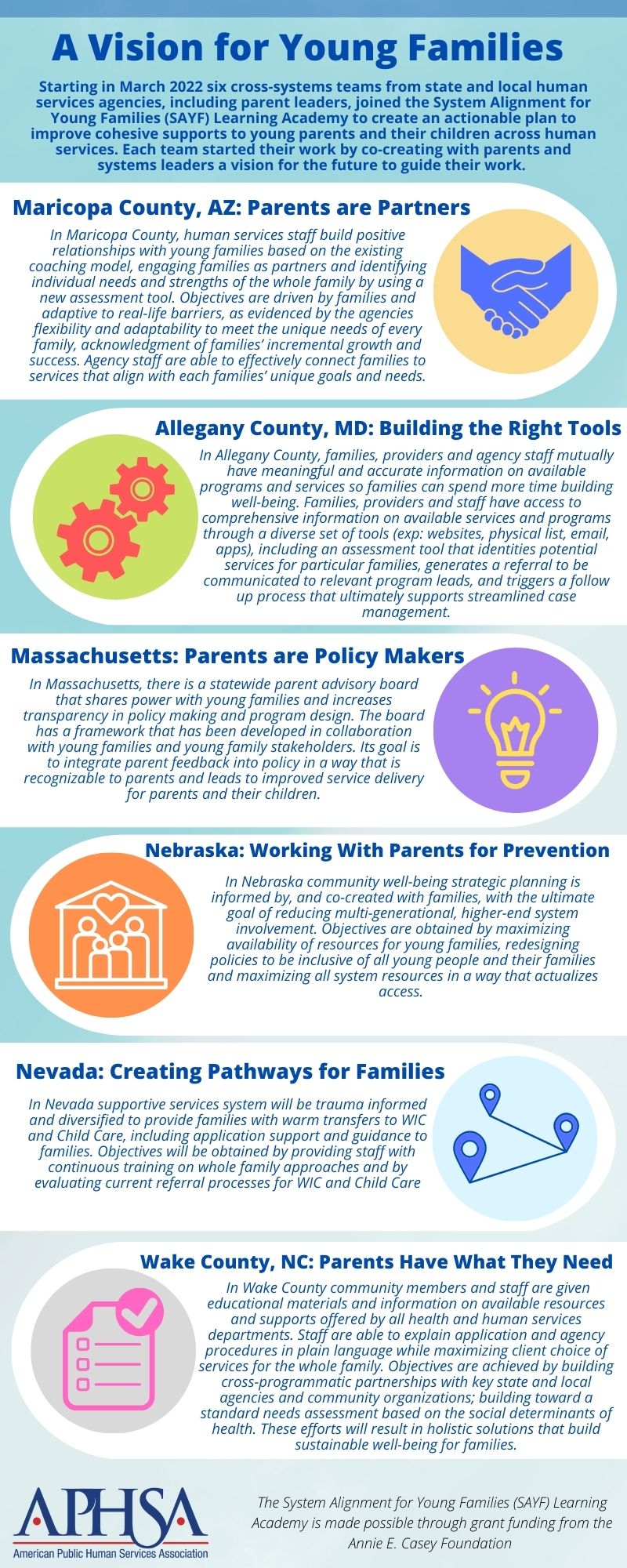
Families thrive when children and parents are empowered to succeed. The earlier families are stabilized, the better overall outcomes are for communities and individual families, which is why investing in young parents and their children is key to building thriving communities. Approximately 3.4 million children across the United States live with parents ages 18-24. Brain science research indicates that young parents are uniquely motivated by their children and are exceptionally capable of adapting and persevering. As young parents navigate the joint responsibilities of parenthood and the transition to adulthood, they often face unique systemic obstacles that include lack of access to quality child care, inadequate or unstable housing, lack of access to mental health services, disruption in education and/or employment, and a lack of parenting support.
For every $1 invested in young children and families through high-quality programs like child care, home visiting programs, employment and training opportunities, and nutrition programs, between $7 and $12 are saved in future interventions like child welfare involvement. Yet, in the current landscape, human services systems are often not designed with the experiences of young families in mind. Building on previous work developing a roadmap for system-level change to better support young families, with generous funding from the Annie E. Casey Foundation, the American Public Human Services Association (APHSA) established the System Alignment for Young Families Learning Academy (SAYF) to support cross-systems teams from state and local human services agencies in establishing a System Alignment Plan (SAP) to support young families.
The SAYF Learning Academy launched in March 2022 with six cross-sectional teams that included parent leadership representing Maryland, Maricopa County (Arizona), Massachusetts, Nebraska, Nevada, and Wake County (North Carolina). Through the development of targeted practice tools, peer-to-peer learning, and individualized planning, each team worked to advance system alignment so that young families experience seamless service delivery that meets their individual needs. Celebrating their work and commitment to supporting young families, each team’s future vision statements are spotlighted in our A Vision for Young Families infographic (above).
Investing in young families during this critical time frame is a chance to maximize two windows of opportunity: supporting parents and their children in developing physical, social, emotional, and economic well-being.
For more information and specific resources on supporting young families, check out APHSA’s new microsite, Aligning for Young Families. With generous support from the Annie E. Casey Foundation, this microsite highlights work from the six project teams, project-created resources, as well as voices of young parent leaders.
Coming soon! APHSA will launch a new community of practice aimed at system alignment for young families, including opportunities for direct technical assistance for participating state and local human services agencies. For more information, please contact Khristian Monterroso, Economic Mobility and Well-Being Project Associate at APHSA.
∎